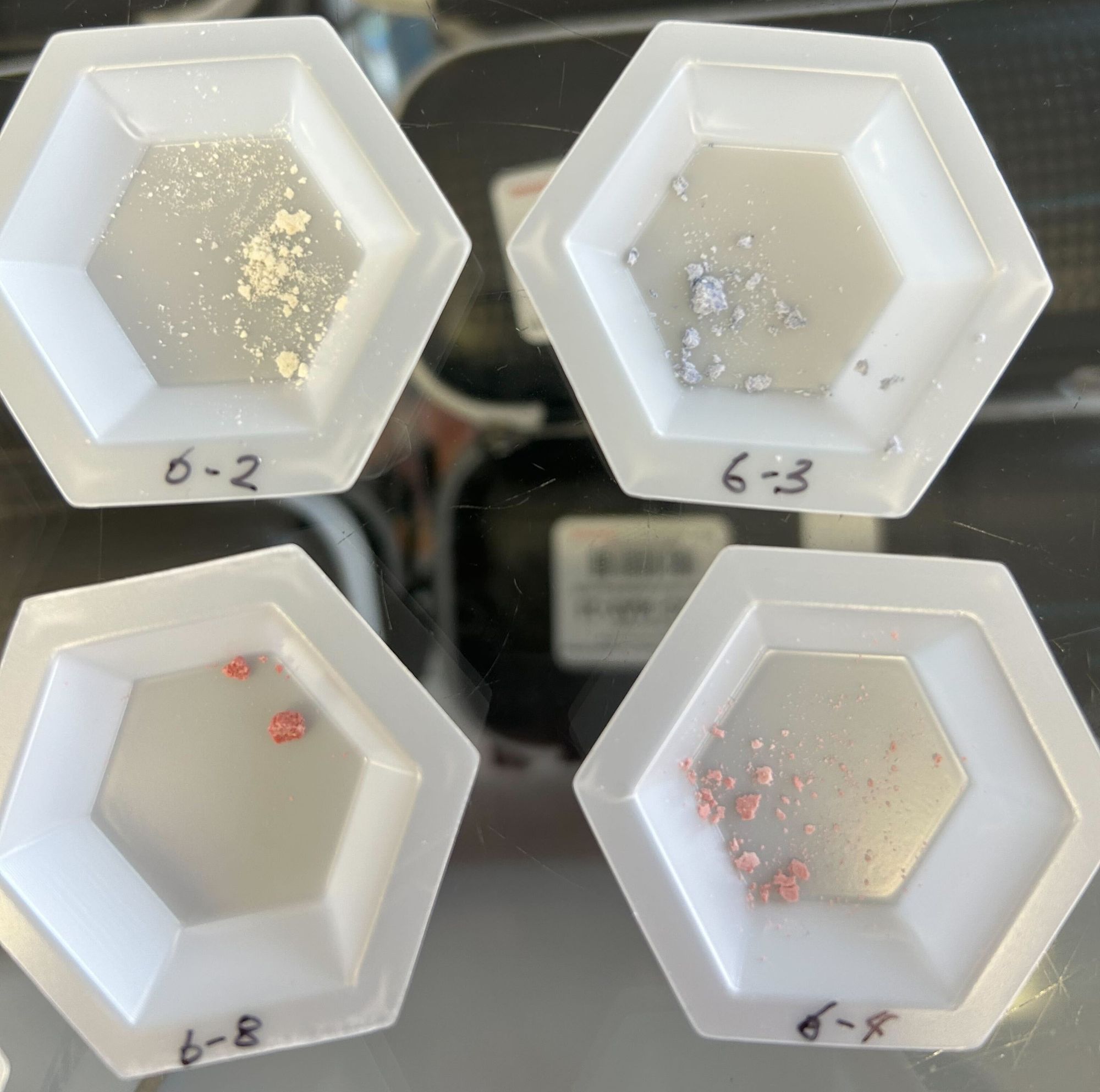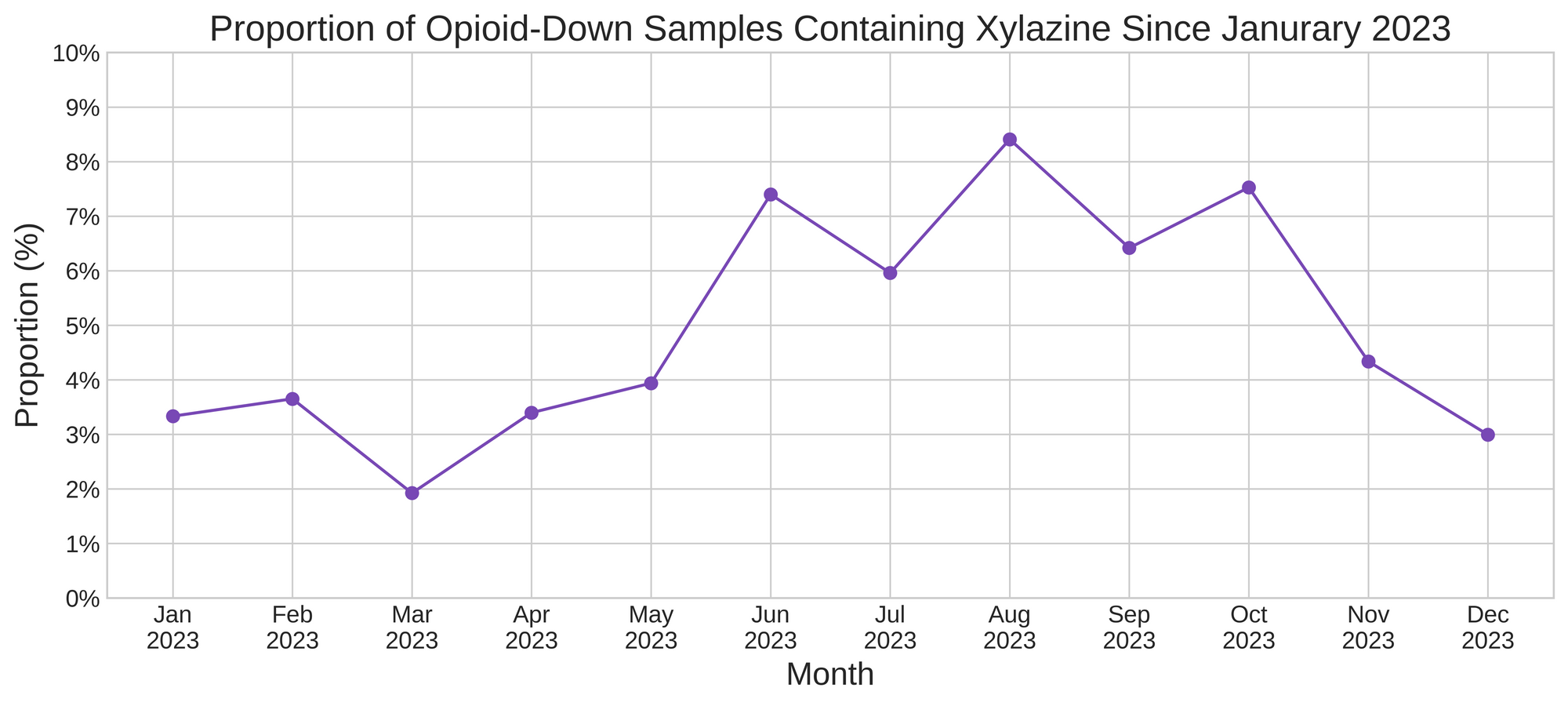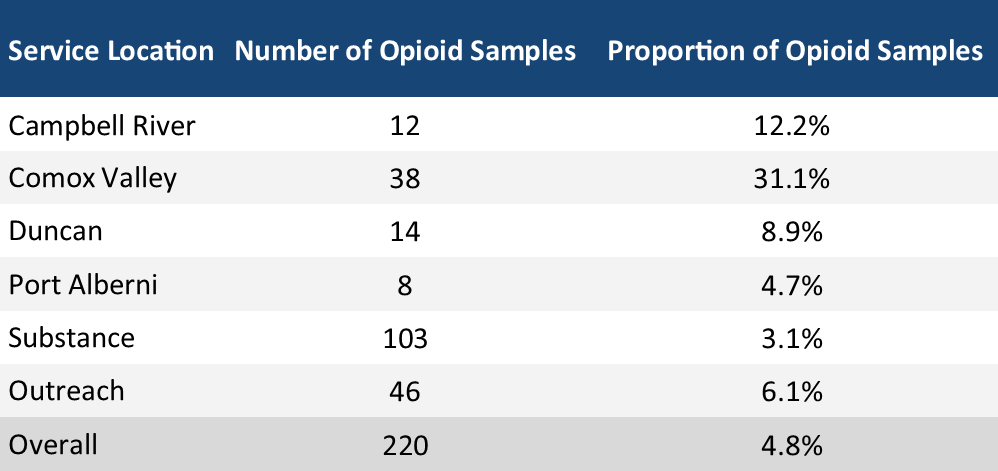Xylazine in 2023 - Frequently Asked Questions

Xylazine continues to be a concern in the unregulated drug market, specifically in opioids, and an issue in the media. Because we often get questions about xylazine we thought we would provide an update on what Substance Drug Checking was detecting and reporting in 2023 on Vancouver Island. If you'd like more background about xylazine or a look into what xylazine in 2022 looked like, you can head over to our Xylazine: A frank scope of "tranq-dope" blog post.
In an effort to be transparent, the most significant limitation of our data and reporting is that we can only report on the samples people bring to our services. We are well aware that this is just a small selection of the overall drug markets on Vancouver Island. With that out of the way, let's look at some frequently asked questions regarding xylazine.
Is xylazine being detected at Substance?
Between January 1st, 2023 and December 31st, 2023, we detected xylazine in 2.5% of all drugs checked, regardless of what drug was expected. However, xylazine is almost always detected in expected opioid samples (typically fentanyl). Almost all (90.5%) xylazine detections were in expected opioid samples but still only 4.8% of opioids samples contained xylazine in 2023.
Overall, xylazine appears to be less detected on the West Coast and much more of an issue in Eastern North America and much more in the US than in Canada. For example, over the last year or so, Toronto’s drug checking project typically reported rates of xylazine detection that are twice as high as Substance is reporting.
Are we detecting an increase in xylazine on Vancouver Island?
No, we are not detecting an increase in xylazine on Vancouver Island. Shown below are the detection rates per month for all of 2023. Here you can see that from the start of the year xylazine detection in opioid samples peaked in August 2023 at 8.4%. The detection rate then fell to 3.6% by December 2023. While it may appear that xylazine detection rates increased during 2023, the peak detection rate found in August 2023 is still below the peak detection rate found in June 2022 of 18.3%, as shown in Figure 1 of our Xylazine: A frank scope of "tranq-dope" blog post.

What is the concentration of xylazine in the opioids?
Since the start of 2023, we have quantified xylazine in 216 expected opioid samples. Overall, the median concentration of xylazine in those samples was 1.1%, with half of the samples containing between 0.2% and 7.5% xylazine. Unfortunately, we don’t know enough about xylazine to say what levels may have certain impacts on people.
If not xylazine then what is it?
On Vancouver Island, 79.3% of expected opioids contain fentanyl and a near majority (47.4%) also include a benzodiazepine. So-called “Benzo-dope” could have some similar effects to so-called “Tranq-Dope” as both benzos and xylazine have significant sedating effects. One concern are the samples that include all three - fentanyl, benzos, xylazine - and the challenges faced by people not expecting such mixtures. In 2023, this kind of mixture occurred 185 times, which represents 4.0% of all opioid samples checked in 2023.
Do some regions see more xylazine than others?
Possibly, our xylazine data is limited in smaller communities on Vancouver Island, but here's a glimpse of our findings in 2023 from Vancouver Island, including distributed sites, outreach/mail samples, and our main Substance location in Victoria. As shown below, our distributed site in the Comox Valley detected the largest proportion of opioid samples containing xylazine, followed by Campbell River and Duncan.

How do you detect and report xylazine?
Substance uses a mass spectrometer (a Paper-Spray Mass Spectrometer (PS-MS) to be specific) and an Infrared Spectrometer (FTIR) to test these samples. The mass spectrometer can provide trace level detection and can determine the concentration of xylazine because it is one of over a hundred substances in our target list. The FTIR can also detect xylazine, but we find it is limited to detecting around one in ten xylazine samples when compared to the mass spectrometer. If xylazine is present at a concentration of 5% or higher, then it is likely FTIR will be able to detect the xylazine, however, this isn't a guarantee.
Beware, the following section is going to get a bit nerdy, feel free to skip ahead if instrumental differences are not what you came here for.
Comparing xylazine detection on PSMS and FTIR
If we compare the detection of xylazine on FTIR and PS-MS over 2023 (Table 2), we can see that PS-MS detected xylazine a total of 206 times, with 173 detections being found solely by PS-MS and 33 detection being found by PS-MS and FTIR[1][2].

Highlighting Different Xylazine Detection Scenarios
If xylazine is present above 5%, it's not guaranteed to be found on FTIR - let's consider these two real example samples to illustrate.
In sample A, FTIR estimated that the sample contained fentanyl at 15-20%, cut with caffeine and erythritol while the PS-MS analysis quantified fentanyl at 17%, fluorofentanyl at 2%, bromazolam at 0.2%, and xylazine at 41.8%.
In sample B, FTIR found the sample contained fentanyl at around 10-15%, fluorofentanyl base around 5-10%, and xylazine at roughly 1%, cut with caffeine and erythritol. PS-MS confirmed the presence of many of these compounds and provided more specific concentrations, finding that the sample contained fluorofentanyl at 1%, fentanyl at 5%, bromazolam at 1%, and xylazine at 0.2%.
In sample A, FTIR was not able to detect xylazine, even though it was present at a high concentration of 42%! Yet, in sample B, FTIR was able to detect xylazine when it was present at the remarkably low concentration of 0.2%. These two extreme cases highlight the question "Is it possible to detect xylazine via FTIR?" does not always have a simple answer. There are many other factors at play in the analysis of unregulated samples including the experience of the technician analyzing the sample, other components in the sample that may complicate the analysis, and the concentration of xylazine itself, to name a few. Which goes to show the value of multi-instrument drug checking for unregulated opioid samples.
What's next?
Sign up or pick-up our weekly and monthly reports to get up-to-date information on what we are checking and finding on Vancouver Island. If you’d like a PDF copy of this blog post you can download it below.If you have samples to check, bring them in or send them to us and we will give you a full report on the composition.
As a research project, Substance will continue to strive to do better and develop and provide the most promising practices in drug checking and we welcome your input and your questions. Finally, our team is committed to working with others on policy changes to end the overdose crisis which includes much more than checking and reporting on the unpredictable supply.
Revised on 1/15/2024: The title of Figure 1 was corrected to "Proportion of Opioid-Down Samples Containing Xylazine Since Janurary 2023"
